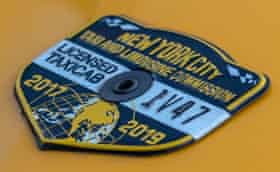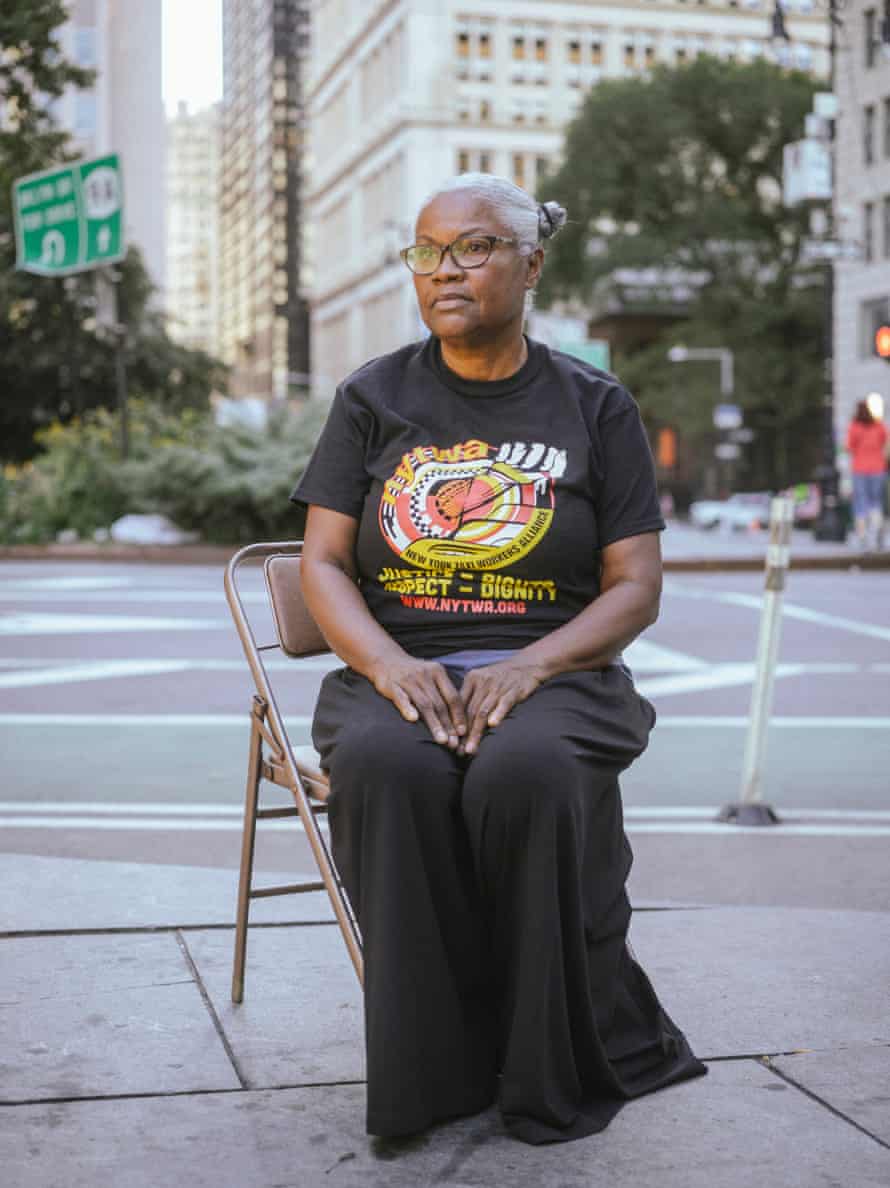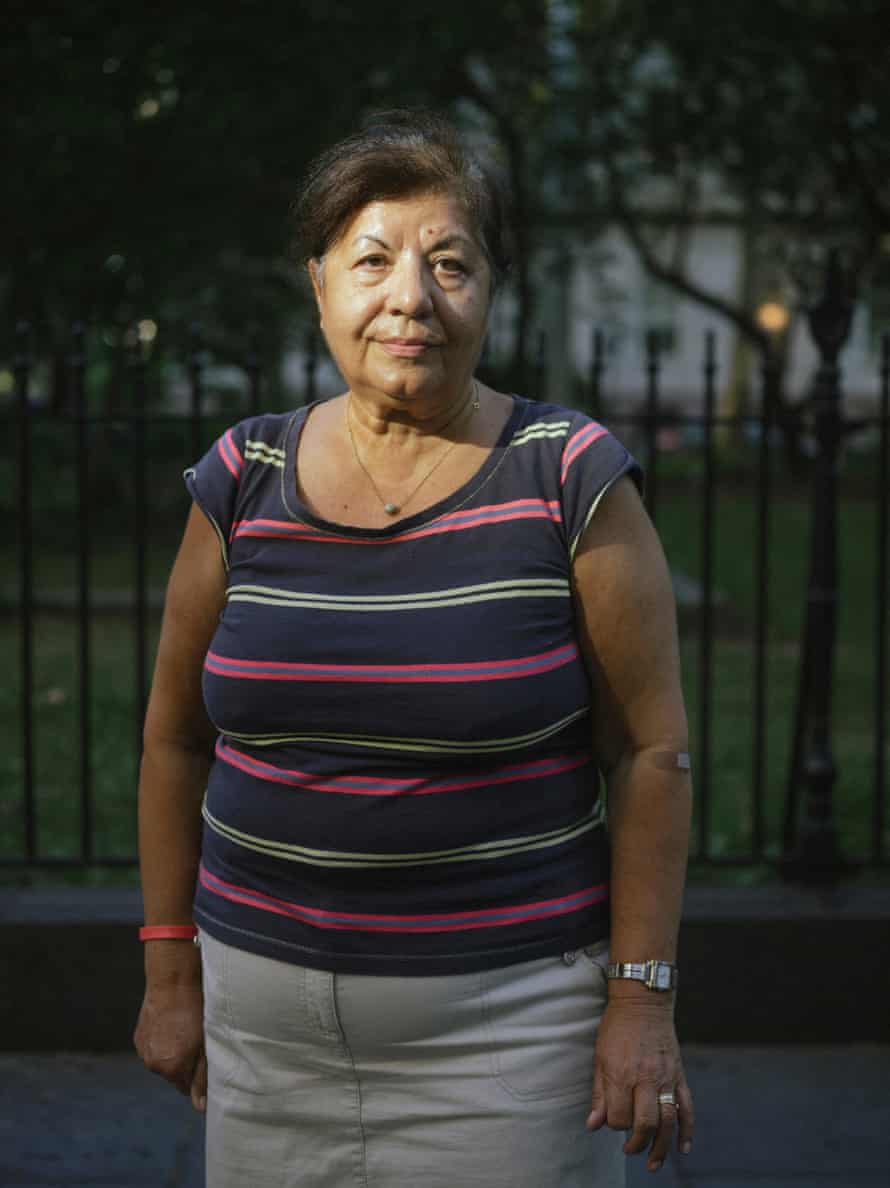Driving a New York City cab has been a vital path for immigrants, and their families, to make a decent living. But in recent years all that has changed. Now, many are struggling under the burden of life-altering debt after investing in a taxi medallion.
A taxi medallion is the physical certificate required to operate a yellow cab. Once seen as a valuable asset that secured a comfortable retirement, the medallion’s worth has plummeted, leaving the thousands of drivers who purchased a medallion in hundreds of thousands of dollars in debt, and financially ruined.

According to the New York Taxi Workers Alliance (NYTWA), the average debt owed on medallions by taxi drivers is $600,000.
The tumultuous state of the medallion can be traced back to its artificial inflation. In 1937, New York City created the medallion system and placed a limit on the amount of medallions that could be sold, making one rare and valuable. By controlling the supply, demand for owning a medallion soared among taxi drivers who bought into the city’s promise that a medallion would bring them financial stability and a pathway to achieve the proverbial American dream.
But the way New Yorkers – and tourists – travel around the city has changed, and the medallion has plummeted in value. In 2014, its value had risen to $1m, when those who wanted to finance a medallion were also at the mercy of predatory lenders. Today, the value is about $100,000 and medallion owners are left mired in debt.
The medallion’s drop in value is due in part to the overwhelming demand for ride-share services provided by the likes of Uber, Lyft and Via. Unlike taxi drivers, the drivers of these companies are not beholden to strict rules and regulations
Medallion-owning taxi drivers, or “owner-drivers”, who spoke to the Guardian say it’s another injustice imposed upon them by the city.
A protest to restructure the medallion debt run by the NYTWA has garnered the support of progressive politicians including Senator Chuck Schumer, Congresswoman Alexandria Ocasio-Cortez, state senator Jabari Brisport, and state assemblyman Zohran Mamdani.
WATCH: I rode with @NYTWA cabbie Richard Chow and ally to taxi workers @ZohranKMamdani to highlight the horrific medallion debt crisis and the need for better solutions from @NYCtaxi.
Wanton lending and a lack of oversight created this crisis. We must make it right. pic.twitter.com/6mepG32Tv8
— Chuck Schumer (@SenSchumer) September 22, 2021
While the city has pledged $65m over 30 years to a medallion debt restructuring plan, the NYTWA and its supporters say it’s not enough. The NYTWA proposed its own debt restructuring plan totaling $90m over 30 years, with a city-backed guarantee to reduce all outstanding medallion debt to a maximum of $145,000, payable at $800 a month.
Whether or not city officials will agree to their pleas remains to be seen, but what is not in doubt is the real hardship being faced by yellow cab drivers and their families. Here are some of their stories.
Dorothy LeConte has a medallion debt of $558,000 but said her broker raised it to over $600,000 after learning the city would restructure taxi payment plans. She pays $2,000 a month on the loan.

Le Conte, once a maid and then a housekeeper supervisor at the Waldorf Astoria, entered the taxi industry after hearing about her friend’s positive experience with a medallion.
“I saw a woman driving a cab. Her husband died and left her a medallion. She was telling me how great it was having a medallion,” LeConte said. “She even said, ‘Dorothy, if you lose your home, let it go. Hold the medallion because with a medallion, you could have several homes.’”
LeConte refinanced her home and purchased a taxi medallion in 1989.
Today, she’s not driving any more since she put her medallion in storage during the pandemic to avoid paying insurance.
“My hope is the city restructures the loan,” LeConte said. “I spent hours working to bring food for my kids. They barely see their mom. They say, ‘Mom, we never see you. You choose your medallion over us. Look what this city did to you.’”
MD “Muhammad” Islam lives in Jamaica Hills, Queens. His loan is about $800,000 and his monthly payments are $4,000. Islam, a Bangladeshi immigrant who came to US in 2007, started driving a cab in 2009.

“City officials, everyone said it’s a good investment. That it’s ‘better than a stock’,” Islam said. “They influenced us to buy the medallion. I borrowed money from my friends, relatives.”
He said the only thing preventing him from filing from bankruptcy is the amount of time it takes for someone’s credit to clear after declaring bankruptcy.
“I have a home. I don’t want to destroy my credit line,” Islam said. “If I file bankruptcy, it will take seven years to clear. It will hurt [my kids], too. I am trying my best to solve the problem and not go bankruptcy.
“I have loans with two banks. I tried to negotiate with the banks but they are not negotiating with me,” Islam said. “If the payment is around $700-800, then we can do that.”
Dorina Nitescu moved to Flushing in 1983 from Romania. Her husband, a former taxi driver, died in 2018, but she must still pay the $200,000 loan on his medallion since the broker listed her as a co-debtor.

“We purchased this asset 30 years ago,” Nitescu said. “It was a good investment at that time for our retirement.”
Now, Nitescu is left with nothing but the medallion and hundreds of thousands of dollars of debt. Her only way to make money off of the medallion is to buy a car and lease it to a taxi driver, but she said she cannot afford it.
“We started paying the loan with the credit card. After [my husband] died, I didn’t have money for the funeral. The broker said, ‘I want to help you from my heart,’ but he was a big liar. They stole everything from him.”
Out of desperation, Nitescu and her husband began attending the NYTWA protests for loan reconstruction.
“My husband even made all the nice signs from the bedroom. He even cut my sheets and said, ‘Don’t worry, we’ll replace that,’” Nitescu said. “He had the passion to do that.“
Today, Nitescu attends the protests alone.
“I don’t know my direction. I’m in a big mess,” she said. “On top of this, I have rent. I’m in the last part of my life. I want to fix my life. I feel sorry for myself. We didn’t come here to be rich. Just to make a living. They stole from us.”
Erhan Tuncel, 61, obtained his taxi license in 1998 and purchased his medallion in 1999. His monthly payment was $3,250 but when his balloon expired, the bank raised the monthly payment to $3,800. His total loan amount is $690,000.

“I told them I couldn’t do it so they came and took the medallion. They foreclosed on it, so I’m not making those payments,” Tuncel said. “It was a pathway for an immigrant in New York to the middle class and that’s been taken away.”
Many have found themselves in a situation similar to Tuncel: his income as a taxi driver is not enough to pay off his medallion debt, so his lender seized it. But without his medallion, Tuncel cannot make a living.
“The conditions now do not warrant such large payments. We have been pushed to that situation by people in power so we want them to correct the situation.”
Tuncel wants his medallion returned, his loan restructured, and to get back to driving the public.
“It would mean getting my life back,” Tuncel said. “This wasn’t our fault. We want the city to realize that and give us back the dignity we deserve.
“It’s a very simple ask when you think about it.”




